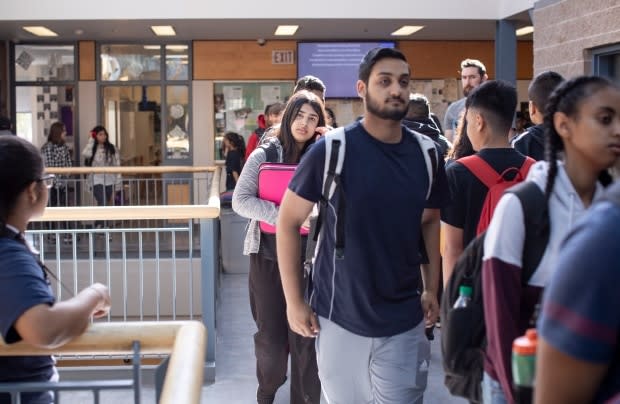'Neglected' school ventilation systems worry parents, experts during COVID-19 pandemic

Ventilation is key to helping quell COVID-19, and schools across Canada should move away from the current piecemeal approach to indoor air, public health and engineering experts say.
Schools can be poorly ventilated, crowded spaces where people spend much of the day in close contact — all factors that can make them high-risk settings and that public health officials say can facilitate outbreaks as a new school year is set to begin.
But experts point to two main ways to reduce the likelihood of transmitting infectious diseases — methods that have been known for hundreds of years:
Boosting natural ventilation, such as opening windows and doors to introduce more outdoor air and dilute contaminants, including viruses, indoors.
Increasing outdoor air intake through building ventilation systems.
Dr. Anne Huang, a public health physician in Regina, said in the context of the COVID-19 pandemic, the research so far suggests the virus can linger for minutes to hours in the air. Most often the aerosols travel a shorter distance than for the highly contagious measles virus.
More maintenance planned
"I think it's unfortunate that we are seeing this piecemeal approach across the country [to school ventilation]," Huang said. "It's probably a reflection of the current debate and discomfort from the public health and medical community with regard to the potential of airborne transmission."
Huang said she believes there's evidence now to warrant proactive, preventative measures to further reduce the risk of schools becoming an amplifier of transmission of the virus.
In a recent preprint study that hasn't been peer-reviewed for weaknesses, U.S. researchers collected viable and infectious samples of SARS-CoV-2 at a distance of up to nearly four metres from an infectious patient in a hospital room.
The findings suggest physical distancing on it own indoors is inadequate to prevent inhalation of infectious respiratory secretions in poorly ventilated classrooms, Huang said.
"The newly released guidance from [the Public Health Health Agency of Canada] to improve indoor air quality (via better ventilation) in school buildings and classrooms was an implicit endorsement on the significance of this study," she said in an email.
Last week, Ontario's government promised to upgrade school ventilation, to buy air purifiers and to improve washroom facilities. So far, it is one of the few provinces to mention improved ventilation systems in their back-to-school plans.

Jeffrey Siegel, a professor of civil engineering at the University of Toronto who researches and consults on healthy buildings, ventilation and indoor air quality, said now is a golden opportunity to update outdated systems.
"We have systematically neglected our heating, ventilating and air conditioning, or HVAC, systems in many of our buildings — maybe especially in our schools — for a long time, and now all of a sudden we want to use them to help protect us from this pandemic," Siegel said.
Like Huang, he said scientists don't have a complete picture of how infectious the virus is in the air.
In the absence of answers, Siegel said, experts like him rely on what's known when studying the problem: Poorly ventilated, crowded environments are a definite risk for transmission.
To solve the problem, he said, governments and school boards need to curb how many students are in the classroom, as well as check ventilation and improve filter quality, including in spaces like crowded hallways or bathrooms.
Fall and winter weather worries
"I'm really worried about when we start heating our buildings in the fall," Siegel said. "When we heat buildings, they get drier and droplets travel much further because they shrink."
Doctors say people are also more susceptible to respiratory diseases in the fall and winter when our mucous membranes are drier.

Huang said she, too, is concerned about when temperatures dip. She's worked for federal and provincial public health departments in Saskatchewan, where most people spend much of their time indoors in school, at work, in cars, at shopping malls and at home when winter temperatures frequently dip to -20 C.
"Ventilation for the indoor space is a particular concern for myself being in Saskatchewan because of the reality that we won't have the luxuries as those in Vancouver to necessarily just open the door or window in the middle of the winter to improve our ventilation," she said.
Anna-Kay Brown said she isn't thinking as far ahead as winter because she's more concerned about what will happen in a few weeks.
Brown's son, Anthony, attends Brookview Middle School, an older building in a northwest neighbourhood of Toronto that's seen a high number of COVID-19 cases. She said she's anxious because not all of the windows open, which means parts of the school often get stuffy.
"They are all wearing masks, trying to breathe just that same air recirculating in that classroom," Brown said.
WATCH | Why better ventilation in schools can prevent transmission:


